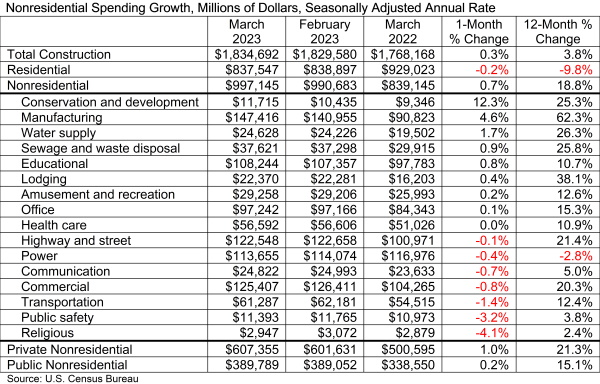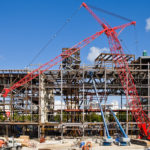Nonresidential construction spending in the U.S. increased by 0.7% in March, according to an Associated Builders and Contractors analysis of data published May 3 by the U.S. Census Bureau.
Nonresidential spending totaled $997.1 billion for the month on a seasonally adjusted basis, ABC said. Spending increased on a monthly basis in eight of the 16 nonresidential subcategories.
Private nonresidential spending rose 1.0%, and public nonresidential construction spending increased 0.2% in March.
“Nonresidential construction spending increased for the 10th time in the past 11 months,” said ABC Chief Economist Anirban Basu. “As has been the case for the past several months, though, the expansion in nonresidential investment is attributable to manufacturing. Were it not for a 4.6% increase in manufacturing-related spending, the nonresidential category would have been flat in March. Because this data is not adjusted for inflation, real nonresidential construction spending excluding manufacturing actually contracted in March. Contractors remain optimistic about their sales and profit margins over the next six months, according to ABC’s Construction Confidence Index,” said Basu. “Given the surprising resilience of construction activity in the face of ongoing interest rate increases and pervasive fears of recession, this confidence has proved justified. Spending has increased over the past year in every nonresidential subsector except for the power category, and multifamily construction is up 23.0% over the past year. The only construction category that is meaningfully affected by interest rate increases is single-family construction; spending is down 22.9% since March 2022.”
U.S. nonresidential construction spending increased 0.4% during February.

Related Posts
-
Private nonresidential spending was up 0.7%, while public nonresidential construction spending was down 0.2% in…
-
Spending, however, was down on a monthly basis in seven of the 16 nonresidential subcategories,…
-
November's seasonally adjusted annual rate of $1.8075 trillion was 0.2% above the revised October rate.






